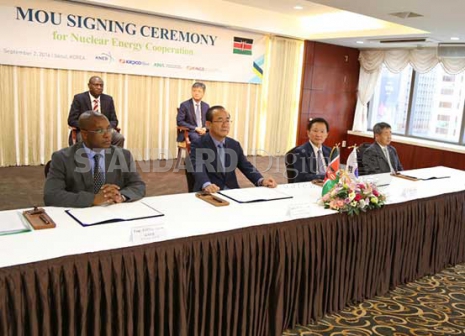
Kenya’s nuclear energy bid received a major boost after signing an agreement with the Korea Electric Power Corp (KEPCO).
The company and the Kenya Nuclear Electricity Board (KNEB) signed an MoU to cooperate on construction of nuclear projects and sharing expertise. Kenya aims to add nuclear power with a capacity of 4,000 megawatts by 2033. In the deal, South Korea has agreed to train a further three Kenyans in nuclear electricity generation. Collins Juma, the acting chief executive of Kenya Nuclear Electricity Board, signed the understanding with four South Korean nuclear institutions in Seoul.